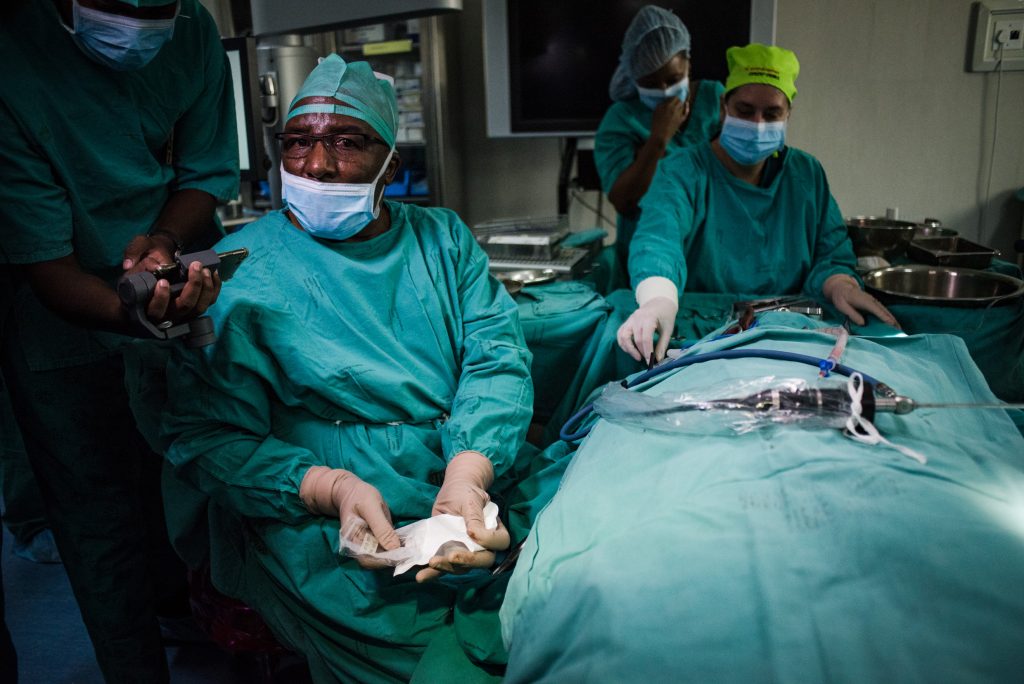Potentially the first procedure of its kind in the world specialists at the hospital, which is affiliated with the University of Pretoria (UP), have performed a middle ear transplant. The reconstructed parts of the ear, the hammer, anvil, and stirrup ossicles, have been replaced with 3D printed titanium. Following the operation Professor Tshifularo, who is also Head of UP’s Otorhinolaryngology Department, said “The operation went fantastically well and we are very excited.”
The achievement has also drawn the attention of the local government with Gwen Ramokgopa, Member of the Executive Council for Health, applauding the achievement, “We are here to congratulate Professor Tshifularo and the team…because they have been working on this for the past 10 years, you have tested it and now you are going to implement it.”
Hopeful of a positive recovery by the patient, Professor Tshifularo and his team now plan to make the operation a common procedure available through state healthcare.

A potentially life-changing procedure
The first patient to undertake this landmark procedure is Thabo Moshiliwa, aged 40, who has middle ear damage resulting from an injury. For the operation, Moshiliwa’s ear was 3D scanned, and this data was used to model suitable ossiscle implants.
“The innovation in this idea is to get the same size of the bone, position, shape, weight and length and put it exactly where it needs to be – almost like a hip replacement,” explains Professor Tshifularo. “By replacing only the ossicles that aren’t functioning properly, the procedure carries significantly less risk than known prostheses and their associated surgical procedures.” Titanium is selected as implant material due to its high biocompatibility rate. The team also uses an endoscope for the operation, making it minimally invasive to the patient. After the procedure, the effect on hearing is reportedly instantaneous. However it can take up to two weeks for the patient to notice a difference due to bandages.
Manufacturing on Demand
Deeming the first operation a success, Professor Tshifularo’s team are now planning to conduct a second operation on a patient Simon Bohale, aged 62. Born with an underdeveloped middle ear, Bohale’s condition worsened when he worked as a welder. In an attempt to correct these complications, Bohale has already undergone two other unsuccessful procedures. “I went to traditional healers but nothing has helped me,” he explains, “I have hearing problems and my right ear pains as well.” Bohale his hopeful that Professor Tshifularo’s process will change his life.

Democratizing 3D printing in healthcare
3D printing has facilitated a number of medical breakthroughs to date. In the UK, Renishaw has recently celebrated the successful implantation of a 3D printed rib implant. The company also made a medical device used in a landmark Parkinson’s Disease drug trial which was documented by the BBC.
Elsewhere, LimaCorporate has announced plans to opened its first an on-site 3D printing facility at New York City’s Hospital for Special Surgery and, in the 3D printed spinal implant sector, acquisitions have started market consolidation.
To enable the UP ear-reconstruction procedure to go live to more patients in South Africa, and potentially the rest of the world, Professor Tshifularo is currently seeking industry sponsors and funding.
“The operation was very successful and it was our first,” the professor concludes, “[…] 3D technology is allowing us to do things we never thought we could.”
* This article is reprinted from 3D Printing Industry. If you are involved in infringement, please contact us to delete it.
Author: Beau Jackson


Leave A Comment